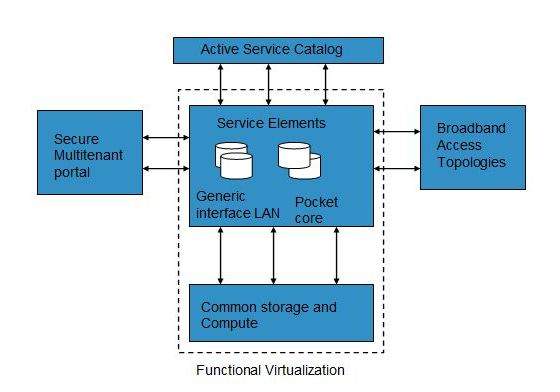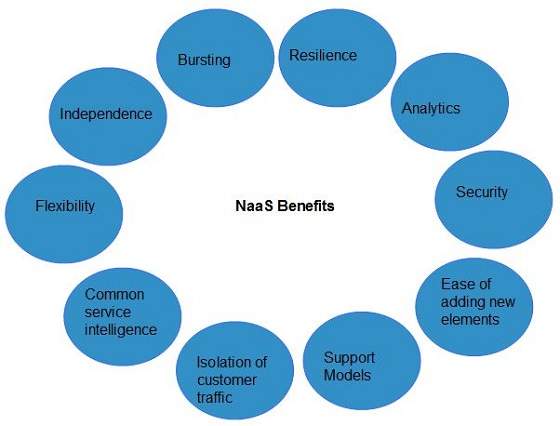
- Cloud Computing Basics
- Cloud Computing - Home
- Cloud Computing - Overview
- Cloud Computing - Evolution
- Cloud Computing - Characteristics
- Cloud Computing - Advantages
- Cloud Computing - Planning
- Cloud Computing - Technologies
- Cloud Computing - Architecture
- Cloud Computing - Infrastructure
- Cloud Deployment Models
- Public Cloud Model
- Private Cloud Model
- Hybrid Cloud Model
- Community Cloud Model
- Cloud Service Models
- Infrastructure Service
- Platform Service
- Software ervice
- Identity Service
- Network Service
- IaaS, PaaS, and SaaS
- Cloud Virtualization
- Cloud Computing Virtualization
- Server Virtualization
- Data Virtualization
- Software Virtualization
- Storage Virtualization
- Network Virtualization
- Linux Virtualization
- Cloud Advanced Concepts
- Cloud Computing - Management
- Cloud Computing - Data Storage
- Cloud Computing - Security
- Cloud Computing - Operation
- Cloud Computing - Applications
- Cloud Computing - Providers
- Cloud Computing - Challenges
- Cloud Computing - Mobile
- Google Cloud Platform
- Cloud Computing - Multitenancy
- Hypervisor Security
- Cloud Computing - Principles
- Security Architecture
- Fault Tolerance
- Cloud Computing - Resiliency
- Service Level Agreements
- Cloud Networking
- Server Consolidation
- Cloud Computing - Scaling
- Autoscaling vs Load Balancer
- Scalability and Elasticity
- Cloud Bursting vs Cloud Scaling
- Resource Pooling
- Load Balancing
- Security Threats in Implementation SaaS
- Cloud Computing - Data Center
- Cloud Computing - Aneka
- Cloud Computing - Rapid Elasticity
- Cloud Computing - Xaas
- Cloud Computing - DaaS
- Cloud Computing - CaaS
- Cloud Computing - Roots
- Cloud Hosting vs Web Hosting
- Colocation vs Cloud
- iCloud Drive vs Dropbox
- SAP vs Oracle Cloud
- Cloud Computing vs Data Science
- Cloud Integration Platform
- Onedrive and iCloud
- Private Cloud and On-premise
- What is Cloudcraft
- Bitbucket Cloud API
- Akamai vs Cloudflare
- AWS CloudWatch vs Datadog
- Cloud Burst
- Cloudflare vs CloudFront
- Elastic Cloud on Azure
- Cloud Useful Resources
- Cloud Computing - Quick Guide
- Cloud Computing - Useful Resources
- Cloud Computing - Discussion
Cloud Computing Network as a Service (NaaS)
Network-as-a-Serviceallows us to access to network infrastructure directly and securely. NaaS makes it possible to deploycustom routing protocols.
NaaS usesvirtualized network infrastructureto provide network services to the customer. It is the responsibility of NaaS provider to maintain and manage the network resources. Having a provider working for a customer decreases the workload of the customer. Moreover, NaaS offersnetwork as a utility. NaaS is also based onpay-per-usemodel.
How NaaS is delivered?
To use NaaS model, the customer is required to logon to the web portal, where he can get online API. Here, the customer can customize the route.
In turn, customer has to pay for the capacity used. It is also possible to turn off the capacity at any time.
Mobile NaaS
Mobile NaaS offers more efficient and flexible control over mobile devices. It uses virtualization to simplify the architecture thereby creating more efficient processes.
Following diagram shows the Mobile NaaS service elements:

NaaS Benefits
NaaS offers a number of benefits as discussed below:

Independence
Each customer is independent and can segregate the network.
Bursting
The customer pays for high-capacity network only on requirement.
Resilience
The reliability treatments are available, which can be applied for critical applications.
Analytics
The data protection solutions are available, which can be applied for highly sensitive applications.
Ease of Adding New Service Elements
It is very easy to integrate new service elements to the network.
Support Models
A number of support models are available to reduce operation cost.
Isolation of Customer Traffic
The customer traffic is logically isolated.